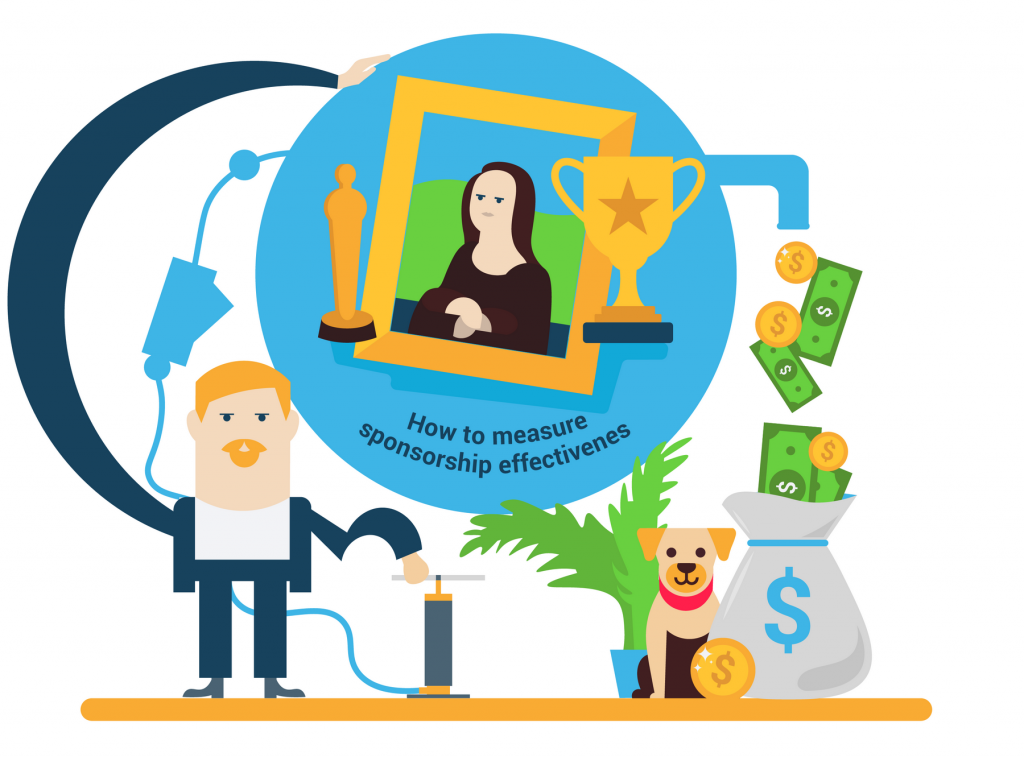
Since sponsorship deals provide unique value, many brands are actively investing in sport and entertainment events. But not all of them know how effectively this money is spent, because there is no standard approach to measuring the impact sponsorships have on business KPIs. In the article we will discuss how planning and executing sponsorship deals can improve their accountability.
Exploiting media resources of high-profile sport and entertainment events like Oscars or The Olympics gives advertisers access to a huge audience and allows creating unique brand experience, that is why companies are expanding their sponsorship portfolios. According to Forbes, in 2020 brands were planning to invest over $68 billion in different events, and the figure doesn’t even include related costs like activations, promotions etc. Here are some benefits of sponsorship that improve brand awareness, consideration and customer loyalty:
- Logo visibility: it’s the most obvious value. Whether a person attends an event, watches it online or on TV or just comes across promotions for the event, they will see the sponsor’s logo.
- Activations & Promotions: these are activities carried out by the brand within the event, like organizing contests or giving out free product samples. They increase brand affinity and positive associations with it.
- Hospitality & Special Incentives: sponsors usually get special seats for top managers, tickets and other unique experiences for important stakeholders.
And these values are pretty much everything companies know about how their sponsorship benefits them. Sponsorship accountability is a real challenge for CEOs and CFOs. According to MASB (Marketing Accountability Standards Board) and ANA (Association of National Advertisers), 60% of marketers don’t have a standard measurement approach and 40% do not even make attempts to quantify the financial results. And only around 30% allocate enough money to the market research, which helps evaluate sponsorship performance. The solution to this problem should start with establishing much needed standards in terms of financial results and ROI measurement processes for this investment category across the industry. So far most CMOs are only able to calculate media equivalence of their sponsorship deals, that is why finance department sees them as expenses rather than assets. In part 2 of the article we cover other measurement approaches, more advanced than quantifying media value, and now let’s talk about actions at the stage where there are no results to be measured yet that will improve sponsorship accountability.
First of all a brand needs a clear strategy, where the overall objective, target audience, activation ideas and supported stages of customer journey should be specified. An effective strategy is one that aligns with the brand’s long-term business plan in terms of goals and KPIs. It also changes and evolves along with the business plan since sponsorship deals usually last for a few years. By developing a strategy for each sponsorship in your portfolio you will avoid audience overlap and waste of funds, improve internal buy-in and accountability. Then you need to make a pro forma sponsorship business case, which has the following benefits:
- It helps to start an effective dialogue across marketing, finance and sales on their expectations of sponsorship performance. It should have an estimated ROO (return on objectives) and all costs related to the sponsorship including activation and research expenses.
- It functions as a roadmap for the necessary research and measurement.
- It helps to determine the prerequisites to achieving target results and suitable contract terms. It’s recommended to customize contracts and make them flexible. Remove the assets you’re not planning or able to use from the contract; it will reduce costs and increase ROI. Some sponsors even arrange for performance-based payments as a risk protection measure.
The pro forma should account for activation and measurement costs, which will be necessary when you evaluate the return. When you later compare the stated expectations with the actual results, the data can be a useful insight source and a foundation for planning and forecasting the output of future sponsorships. That is why brands need to adopt business cases for sponsorships as a regular practice to ensure improvement and effective management of their sponsorship portfolio.
After you get a deal, more work comes. Stewardship and activation are necessary to monitor and adjust sponsorship tactics, unlock its full potential and increase the impact. To achieve great stewardship you need the following:
- Open and frequent collaboration between property and sponsor.
- Interim performance updates.
- A single point of contact or a cross-functional team with budget transparency, common objectives and necessary tools.
- Established assessment and reporting processes.
Activation needs to tell your brand’s unique story, associate it with the sponsored event and differentiate from competitors. Here are features of a successful activation:
- Unique demonstration of the brand’s connection to the event.
- It multiplies sponsorship value.
- It makes you noticeable among other sponsors.
- Enough budget is allocated to activation when the deal is made.
- Different activation tactics are tested prior to the event.
- Social media and digital are used to engage audiences and reduce costs.
If you follow the advice listed above, you are guaranteed to maximize the effect of your sponsorship deal and improve its accountability. And in the next article you will learn about measurement approaches and tools used to quantify the financial output of sponsorships.


